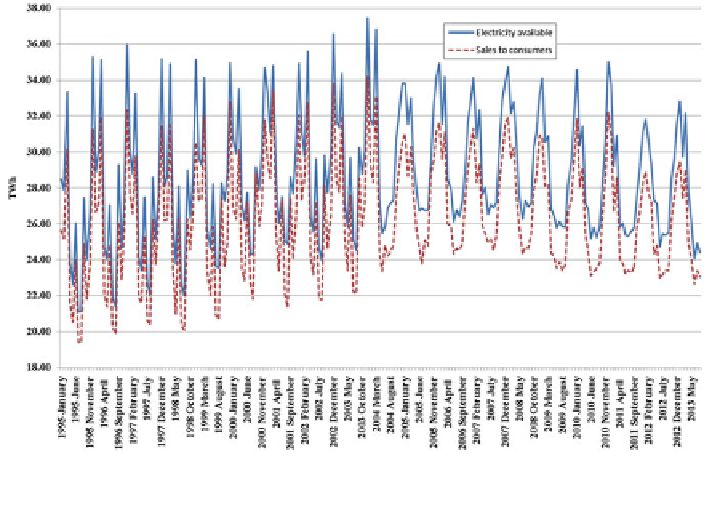Environmental Engineering Reference
In-Depth Information
Fig. 1 Past record of UK electricity available and sales of electricity to consumers (Public
distribution system)
3.2 Future Generating Portfolios
The UK has legislation in place setting limits on the emissions of greenhouse gases
as far ahead as 2050.
8
Other legislation mandates a minimum level of renewable
energy in 2020.
9
The 2012 Electricity 10 Year Statement
10
(or ETYS for short; [
29
]
is the
rst GB document of its kind to be published. It forms part of a new suite of
publications which is underpinned by the UK Future Energy Scenarios. The ETYS
analysis is based around three future energy scenarios which provide a range of
potential reinforcements and outcomes. Additionally, further analysis has focused
on the contracted background, which includes any existing or future project that has
a signed connection agreement with National Grid.
8
The Climate Change Act of 2008 introduced a legally binding target to reduce GHG emissions
by at least 80 % below the 1990 baseline by 2050, with an interim target to reduce emissions by at
least 34 % in 2020. It also introduced
, which set the trajectory to ensure these
targets are met. These budgets represent legally binding limits on the total amount of GHG that can
be emitted in the UK for a given 5-year period. The fourth carbon budget covers the period up to
2027 and should ensure that emissions will be reduced by around 60 % by 2030.
9
Renewables are governed by the 2009 Renewable Energy Directive which sets a target for the
UK to achieve 15 % of its total energy consumption from renewable sources by 2020.
10
'
carbon budgets
'
http://www.nationalgrid.com/uk/Electricity/ten-year-statement/current-elec-tys/
.

Search WWH ::

Custom Search